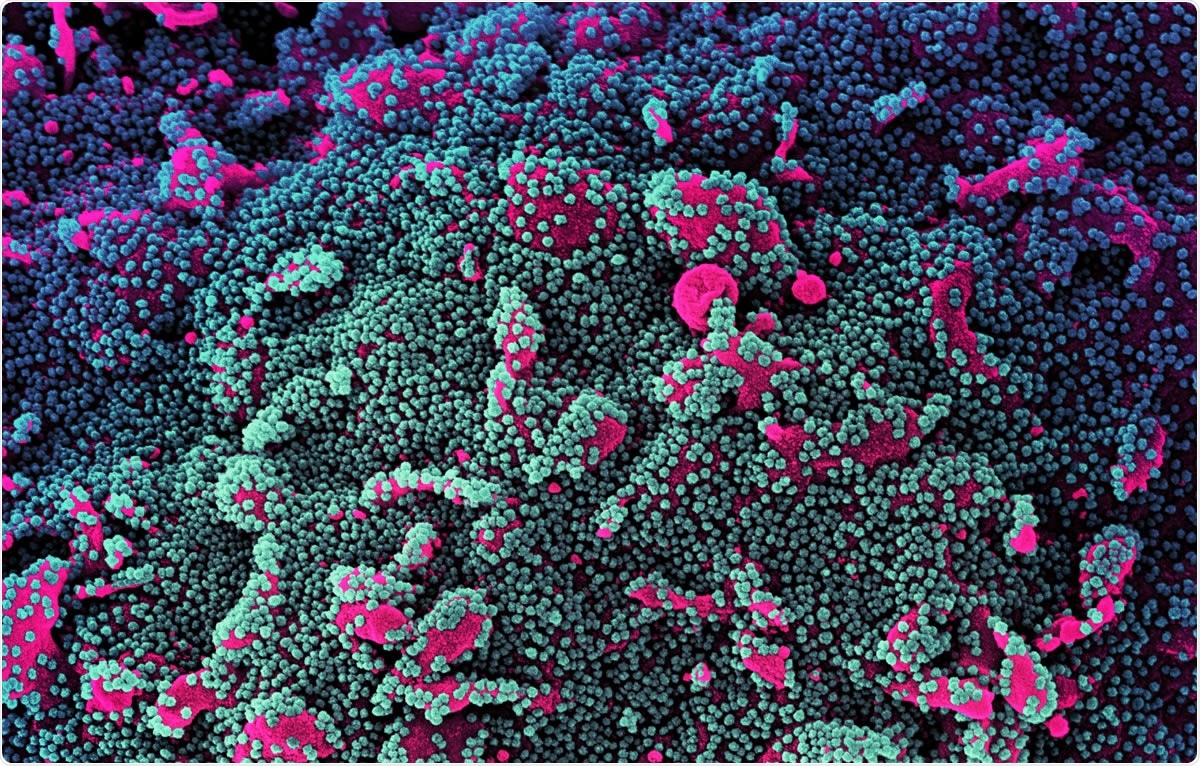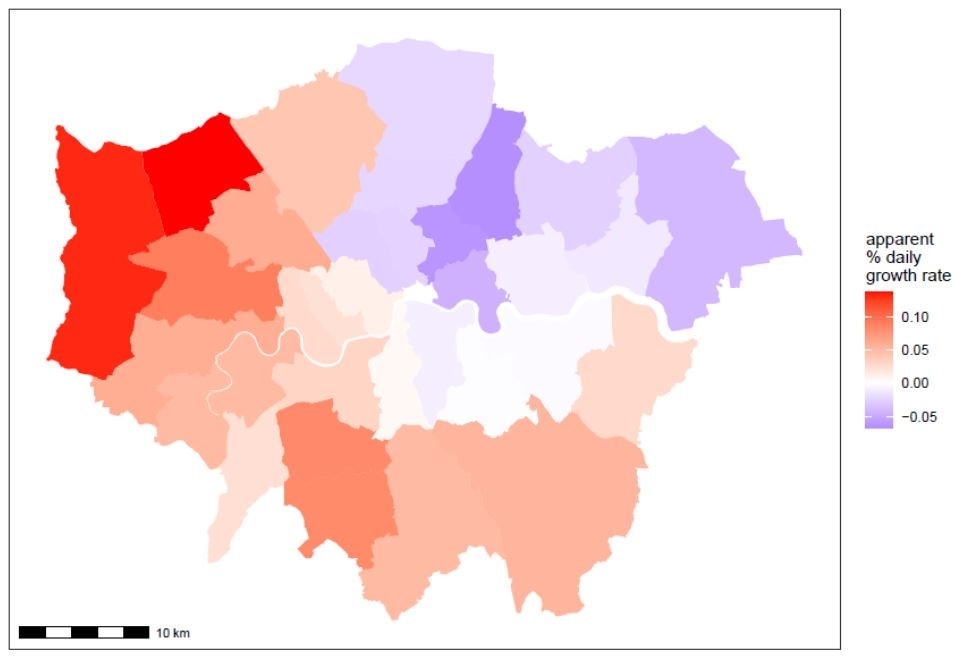Researchers have reported findings from round nine of the REal-time Assessment of Community Transmission Study (REACT-1) that estimates community prevalence of infections with severe acute respiratory syndrome coronavirus 2 (SARS-CoV-2) in England.
The SARS-CoV-2 virus is the agent responsible for the coronavirus disease 2019 (COVID-19) pandemic that continues to threaten global public health and the worldwide economy.
Round nine of REACT-1 was carried out in England during February this year (2021), some four to seven weeks after the third national lockdown was implemented on 5th January.
Steven Riley from Imperial College London and colleagues say the results from round nine showed a significant decline in SARS-CoV-2 prevalence, compared with at the beginning of lockdown (round 8).
However, prevalence still remains high and the rate of decline slowed nationally during the most recent period assessed (13th to 23rd February). The study also indicated that prevalence has grown in certain parts of the country.
The team says continued adherence to social distancing and public health measures is needed to ensure infection rates fall to much lower levels.
“This will help to ensure that the benefits of the vaccination roll-out program in England are fully realized,” writes Riley and colleagues.
A pre-print version of the research paper is available on the medRxiv* server, while the article undergoes peer review.

England starts to exit third national lockdown
The prevalence of COVID-19 cases was high in most European countries at the beginning of 2021. A third national lockdown was introduced in England on 5th January 2021, when the seven-day rolling average number of cases was 95 per 100,000 people.

By 22nd February, this number had fallen to 18 per 100,000 and the seven-day average of daily hospital admissions had fallen from 3,592 to 949. More than 15 million people had also received at least one dose of either the Pfizer–BioNTech or Oxford–AstraZeneca COVID-19 vaccine.
England starts to exit the third national lockdown on 8th March 2021, beginning with the reopening of schools. Four additional steps will follow, separated by 5-week periods to enable the assessment of the impact each set of relaxations has had on the epidemic.
This roadmap for the gradual relaxation of lockdown will be accompanied by the ongoing roll-out of vaccination against a background of emerging novel variants of SARS-CoV-2.
Any surge in the prevalence of infections could threaten the smooth continuation of the roadmap.
“A subsequent increase in community prevalence of infection could delay further relaxation of lockdown if vaccine uptake and efficacy are not sufficiently high to prevent increased pressure on healthcare services,” writes Riley and colleagues.
What did the study involve?
REACT-1 study participants (aged 5 years and older) conduct a self-administered throat and nose swab for analysis by reverse transcriptase-polymerase chain reaction (RT-PCR) and complete a questionnaire on demographics, health and lifestyle.
The PCR self-swab arm of (REACT-1) is designed to estimate the community prevalence of SARS-CoV-2 infection based on random cross-sections of the population.
Round nine was divided into round 9a, with swabs collected between the 4th and 12th February, and round 9b, with swabs collected between the 13th and 23rd February.
The results from these rounds were compared with those from round 8, where swabs were collected between the 6th and 22nd January.

What did the study find?
Of 165,456 participants with a valid test result, 689 tested positive for SARS-CoV-2. Of 87,408 participants in round 9a, 388 tested positive for SARS-CoV-2 and of 78,047 participants in round 9b, 301 tested positive.
Overall, SARS-CoV-2 prevalence was 0.49%, representing a fall of more than two-thirds from a prevalence of 1.57% in round 8.
However, the rate of decline slowed from the 15 days estimated using data from the end of round 8 and the start of round 9, to an estimated 31 days based on data from round 9 alone.
The patterns of regional prevalence differed between rounds 8 and 9, when compared with patterns observed in rounds 9a and 9b.
Between rounds 8 and 9, prevalence dropped significantly in seven of nine regions, with smaller falls seen in Yorkshire and The Humber and in the North East.
However, between rounds 9a and 9b, while prevalence fell in the North East, the North West, East and South West, increases were seen in London, the South East, East Midlands and West Midlands.
Which population groups saw higher prevalence?
Prevalence fell by 50% or more across all age groups in round 9, compared with round 8.
In round 9b, the prevalence ranged from 0.21% among those aged 65 or older to 0.71% among those aged 13 to 17 years.
Prevalence in round 9 was highest (2.1%) among Pakistani participants, compared with 0.45% among white participants and 0.83% among black participants.
The results also showed that healthcare workers and care home workers were 48% more likely to test positive in round 8 and 37% more likely in round 9, compared with workers in other professions. The odds of infection were also higher across both rounds among those working in public transport, education, school, nurseries and childcare.
“Continued vigilance is necessary”
The researchers say that although the community prevalence of swab-positivity for SARS-CoV-2 has markedly declined between January and February 2021 during the lockdown in England, it still remains high.
Furthermore, “the rate of decline has slowed in the most recent period, with a suggestion of pockets of growth,” they write.
“Continued vigilance is necessary to ensure that the evident gains achieved in lockdown are maintained as lockdown measures are eased over coming weeks,” concludes the team.
*Important Notice
medRxiv publishes preliminary scientific reports that are not peer-reviewed and, therefore, should not be regarded as conclusive, guide clinical practice/health-related behavior, or treated as established information.
- Riley S, et al. REACT-1 round 9 final report: Continued but slowing decline of prevalence of SARS-CoV-2 during national lockdown in England in February 2021. medRxiv, 2021. https://doi.org/10.1101/2021.03.03.21252856, https://www.medrxiv.org/content/10.1101/2021.03.03.21252856v1
Posted in: Medical Research News | Disease/Infection News
Tags: Coronavirus, Coronavirus Disease COVID-19, Education, Efficacy, Healthcare, Hospital, Pandemic, Polymerase, Polymerase Chain Reaction, Public Health, Research, Respiratory, Reverse Transcriptase, SARS, SARS-CoV-2, Severe Acute Respiratory, Severe Acute Respiratory Syndrome, Syndrome, Throat, Vaccine, Virus

Written by
Sally Robertson
Sally first developed an interest in medical communications when she took on the role of Journal Development Editor for BioMed Central (BMC), after having graduated with a degree in biomedical science from Greenwich University.
Source: Read Full Article
